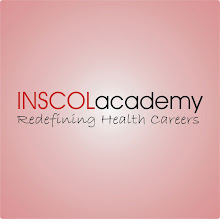 Does
the Indian healthcare system provide a comprehensive range of health
services? Is the healthcare system entirely independent? Does the system
operate under different management, rules and political authority? If
yes is your answer to these queries, then one has to wonder how far the
healthcare system is useful to India’s citizens? Can a middle-class
family, let alone an impoverished family, afford good healthcare, in
India? The answer to that question is still open.
Does
the Indian healthcare system provide a comprehensive range of health
services? Is the healthcare system entirely independent? Does the system
operate under different management, rules and political authority? If
yes is your answer to these queries, then one has to wonder how far the
healthcare system is useful to India’s citizens? Can a middle-class
family, let alone an impoverished family, afford good healthcare, in
India? The answer to that question is still open.
Today we live in the amidst of a host of
infections: both known and unknown. How are healthcare organizations
and institutions recognizing this fact and acting on this recognition?
Are patients treated in a hospital free of infections, and has the
treatment been effective? If the answers are yes, do we have evidence to
this effect, which is research-based, detailing strategies or
protocols? For instance, many bacterial contagions were effortlessly
treated with antibiotics previously; unlike the present where such
contagions have been difficult to control, on account of the antibiotic
resistance built up by the bacteria. Some examples are those of the
Methicillin-Resistant Staphylococcus Aureus (MRSA) bacteria (common in
hospitals) and the tuberculosis-causing bacteria, Mycobacterium
tuberculosis. Under the circumstances, it is not surprising that, more
than any disease, antibiotic resistance is rapidly growing as one of the
most dangerous threats to individual wellbeing currently, as per the
World Health Organization (WHO). Being healthcare paramedics, it is
important that we understand the implications of this threat, after
every medical or nursing intervention: an understanding that will enable
us to ensure effective and quality healthcare delivery.
Let us take a look at how the United
Kingdom’s NHS (National Health Service) functions. In the UK, the NHS is
primarily sponsored by the government. It delivers a wide array of
public well-being services, a majority of which are free at the point of
use, for legal resident of the UK. Thus, the healthcare in the UK is
structured independently and also operates under different management,
rules, and political authority. Complementing this service, the NMC
(Nursing and Midwifery Council) keeps updating treatment regimens and
protocols, by analysing latest research outcomes on new medical or
nursing interventions; which further strengthens the delivery of
high-quality care through the NHS.
For example, a nurse witnessing a
patient’s fall in a hospital set-up follows the ABCDE approach for
client care assessment and uses the SBAR approach to inform senior
health personnel, about that patient’s health condition, using relevant
processes for the reporting. Such an approach is not widely practised in
the Indian Scenario. Applying such an approach in the Indian healthcare
system will help healthcare providers prioritise their work, report
relevant and adequate information, and provide effective patient care.













